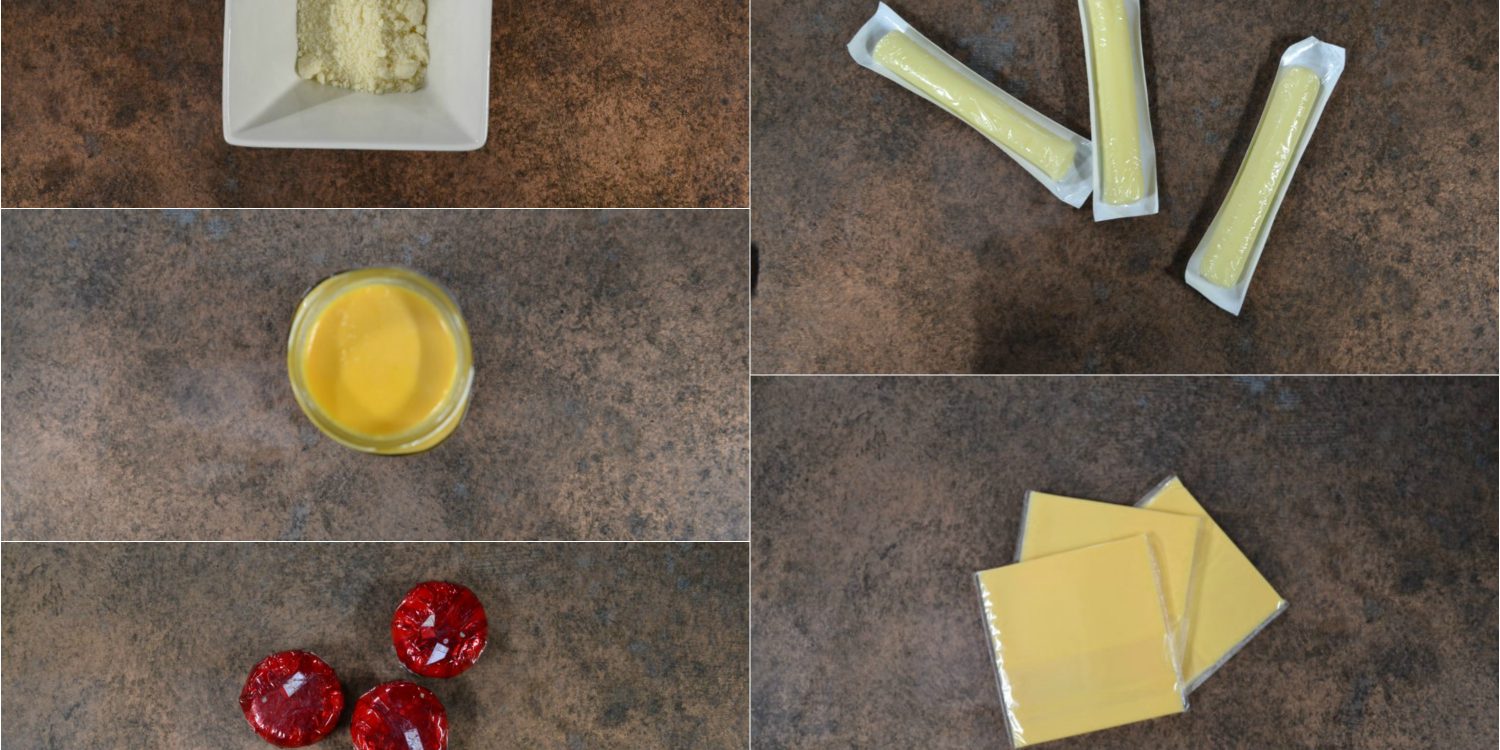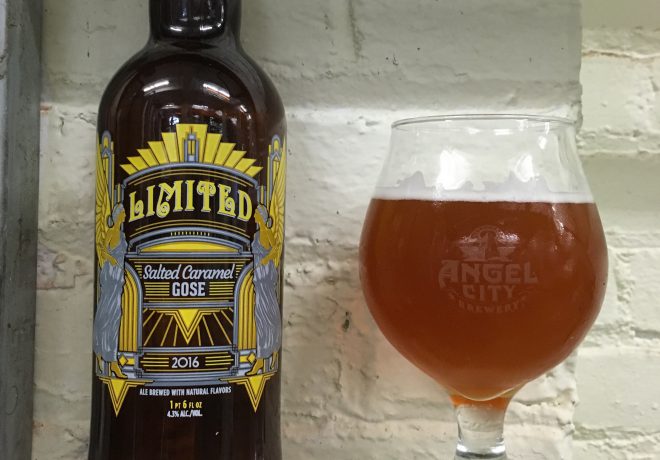One of our favorite things to do at Angel City is pair our beer with delicious food. Sure! Beer is great on its own. We would be remiss not to say that, but when paired with something equally as delicious – does life get much better? Every three months or so, we pair our beers with one of the best, most compatible food sidekicks out there: cheese. Our confederate in this endeavor is Alex Ourieff, owner and monger at Vagabond Cheese Company.
When he made his quarterly visit to decide which cheeses to pair with which beers, we sprung a surprise on him. After we made our picks, we brought out some cheeses of our own that were….less than gourmet.
Dan Shapiro, Certified Cicerone: So Alex, we thought since you spend so much time drinking really good beer, and eating really good cheese, we’re going to handicap you a little bit, and see if you can find a pairing for great beer with some mass-market cheese. So, I went to the local grocer across the street, and found the first five cheese that I could find. I was very disappointed that I could not find any aerosol propelled cheese, but I think we have a good list here regardless. You ready to have some fun?
Alex Ourieff, award winning Cheesemonger: I’m ready, let’s do it.
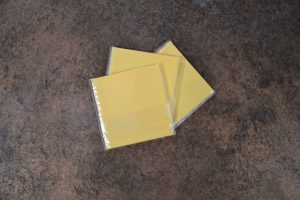
DDS: We’re gonna start with American singles, these are wrapped in plastic. And potentially made out of plastic.
Melissa Corbin, Midwesterner: For freshness!
AO: For the record, these are a “pasteurized prepared cheese product.”
DDS: So cheese is used as an adjective, not a noun.
MC: So what’s the difference between this and a traditional American cheese?
AO: I don’t know, I think this is a traditional American cheese.
DDS: This is the Archetype.
AO: So when you taste cheese, the first thing you look for is the texture, how would you describe this texture?
DDS: Floppy.
MC: Flubber.
AO: If you take a piece of cheese and bend it, to see when it breaks, it’s a good way to determine texture. It’s what’s called a “short” or a “long” texture. “Short” breaks really quickly, and a long texture is very flexible. This is what I would describe as the longest texture.
AO: Next is aroma, it smells…like, vaguely cheese.
MC: It smells like boxed mac and cheese.
AO: It smells like if you were going to make “cheese smell,” this is cheese smell.
DDS: Taste is…I would say it has a clean finish?
AO: It’s definitely very mild.
DDS: When people talk about sharpness in cheese, what are they talking about?
AO: To be honest, I don’t know. Generally I think of sharpness as acidity, but I find that sharpness is one of a handful of words that people associate with cheese, so they just use it with every cheese they taste. Which makes it hard to pinpoint what is meant by that. It’s lost its meaning because it’s used so liberally.
DDS: I think the beer equivalent would be “light.”
AO: Yeah.
DDS: Alright, so if we’re pairing a beer with this, what do we think?
AO: So this cheese has – sorry, this pasteurized prepared cheese product – has no acidity at all. So I would probably go with a mellow beer that does not have a lot of hops. I don’t know that this would go with the IPA. Maybe a Pilsner?
DDS: I would like to point out that Mel has made a Zorro mask out of her cheese product. Does that make it taste better?
MC: Well yeah, that’s how I measure a good cheese.
DDS: So we’re looking at something that’s low intensity, maybe has a clean finish.
AO: But something that’s got some carbonation, like some solid carbonation. It coats my palate in a way that doesn’t dissipate.
DDS: Let’s try something Belgian – how about the wit.
AO: Alright, coat your palate with the cheese, smell the aroma, get the notes.
DDS: Usually with these pairings, you want them to both rise when paired together. But with this one, this completely masks the cheese product. Which generally would be negative, but is kind of a highlight.
AO: I think this is our winner.
DDS: Wit it is. Moving on. So our next one, we’re going to step it up a little bit.

AO: So this seems to be some sort of gouda, because of the wax. Or gouda [Editor’s note: He pronounced this in a really pretentious way], because of the shape.
DDS: The distinct advantage this has over the last cheese product, is that this one has both plastic and wax wrapping it.
AO: So I’ll start off by saying that this cheese is meant to be eaten as a whole piece, but I find it to be too big. As much as I like cheese, I find taking a mouthful of cheese to be a little much. The texture – this is a very young cheese, it’s not aged at all.
DDS: You describe this as a gouda style, but it smells much more like a mozzarella.
AO: I’m assuming that only based on the wax. I was just gonna say, it smells like a low moisture mozzarella.
DDS: So what are we looking for to balance with?
AO: So this is more acidic than a gouda. For the acid, I think you could go for a little more hops. I wouldn’t go really strong.
DDS: Let’s try the Pilsner, since ours is dry-hopped with Saaz Noble Hops.
AO: You know when you get a Frappuccino with whipped cream, and the whipped cream leaves a buttery film on the roof of your mouth? That’s what I got from the first cheese – this cheese doesn’t do that, it’s much higher quality.
MC: I actually really like that with the Pilsner.
DDS: Yeah, it brings out the rosy elements in the cheese.
MC: Rosy elements?
DDS: Yeah, floral?
AO: Yeah, it makes the pilsner herbal quality come out. I don’t think we get much of the cheese in this pairing, but as opposed to the cheese being obliterated by the beer in the first pairing – which was intentional – in this one, it actually makes the beer taste better.
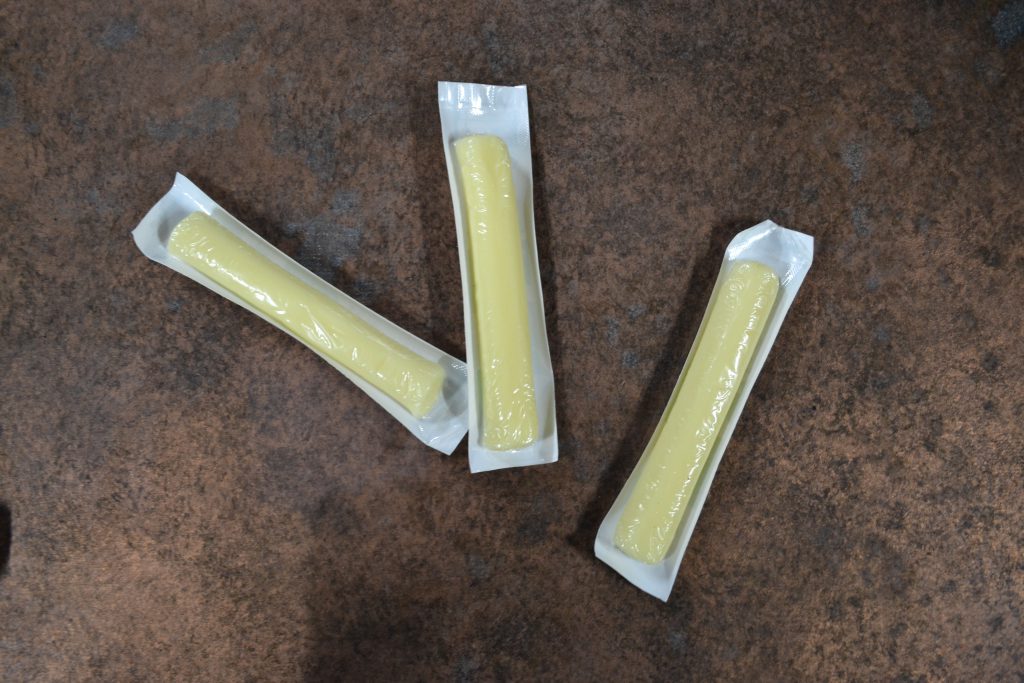
DDS: Alright, for the next one – string cheese.
AO: OK, I love string cheese. And this is Organic!
MC: Low Moisture, part skim, organic string cheese.
AO: Should we read ingredients? “Organic cultured pasteurized part skim milk, salt, microbial enzymes.” So this is essentially real cheese. There’s nothing in here that’s not in a nice cheese. It’s dealt with in a different way, but it’s actual cheese.
DDS: So what is it you like about string cheese?
AO: I find it to be very snackable. I like peeling it a lot, it reminds me of my youth…and I think that’s it. That’s enough, isn’t that enough? I don’t think it’s delicious, but it’s yummy. But yeah, this one doesn’t taste that good. Not that string cheese is supposed to taste like a lot. But the string cheese I grew up with, tastes a lot more than this. This is not my favorite.
DDS: So I feel like we have to obliterate this one too – blow it out with a big flavor.
MC: You know what I think? Berliner.
DDS: That’s what it’s missing – acidity.
MC: Let’s try it.
DDS: See this to me is a complete experience.
AO: In what way?
DDS: What I was missing before was…some sort of flavor? And the Berliner has a nice bright acidity that gives it life.
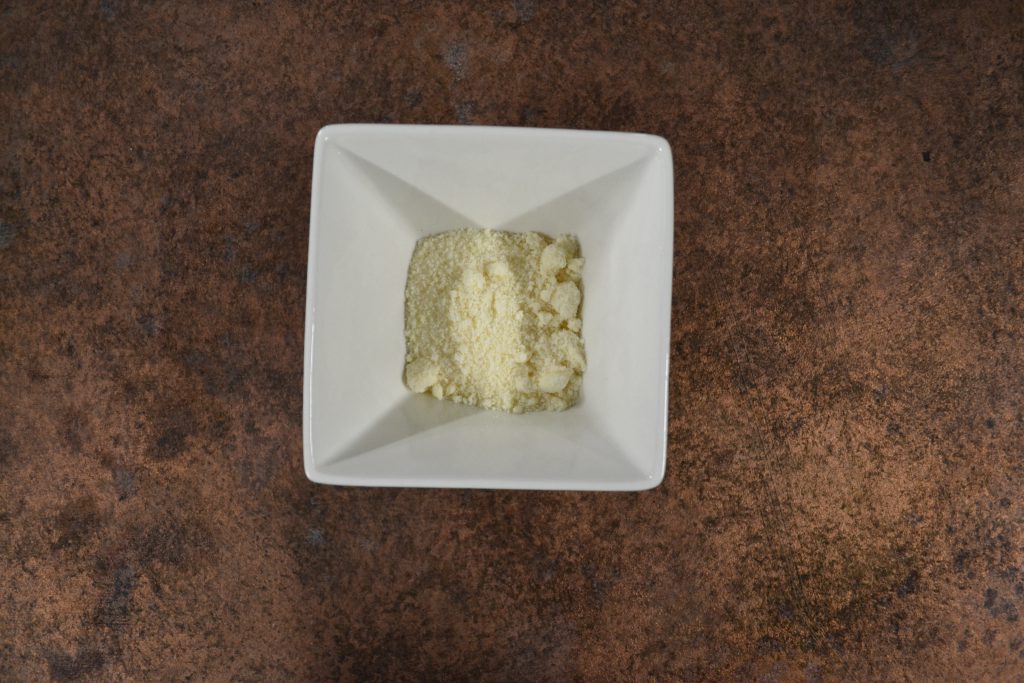
DDS: Number 4 – this one is an old world cheese. It’s a parmesan, but it’s unrefrigerated. I found this one very far from the coolers.
AO: First of all it’s a powder. It’s not a grated product.
MC: It says it’s 100% grated.
AO: Alright I’m gonna do ingredients. So the first is Parmesan cheese – which is not the only ingredient. So “parmesan” is a misspelling of Parmigiano, because you’re actually only allowed to sell real Parmigiano-Reggiano the way the Italians have decided it should be under that name. So the name Parmesan is to get around that. It’s like if you got a sparkling wine called Shampaynee.
DDS: I saw them in concert a couple weeks ago, they were pretty good.
AO: So Parmesan cheese, which is made of pasteurized part skim milk, cheese culture, and enzymes – so that is, ya know, cheese. Cellulose powder – to prevent caking. Potassium Sorbate, to protect flavor. Then it says below that, just in case you have any allergies, it says “Contains milk.”
DDS: That seems like half an allergen warning, and half a reassurance.
AO: Exactly.
DDS: So what would you normally pair with a real Parmigiano-Reggiano?
AO: I think it works with a number of different beer styles. Some of my favorites have been some of the maltier beers in the Robust Porter neighborhood, the darker Belgians, and occasionally with Saisons.
DDS: Let’s try it with our Baltic Porter then!
AO: I’m going to try the cheese first, and I’m going to squeeze it between my fingers.
DDS: To check the texture?
AO: In order to transport it. It’s very hard to eat.
DDS: With the beer? I think the beer brings out some of the latent robustness of the cheese flavor.
AO: I’ll tell you what I don’t like, is that when I drink the beer, I feel like the cheese makes it seem like there is sand in the beer. Like they don’t blend. But I think this pairing is fine, and I’m going to give it an A+ for effort.
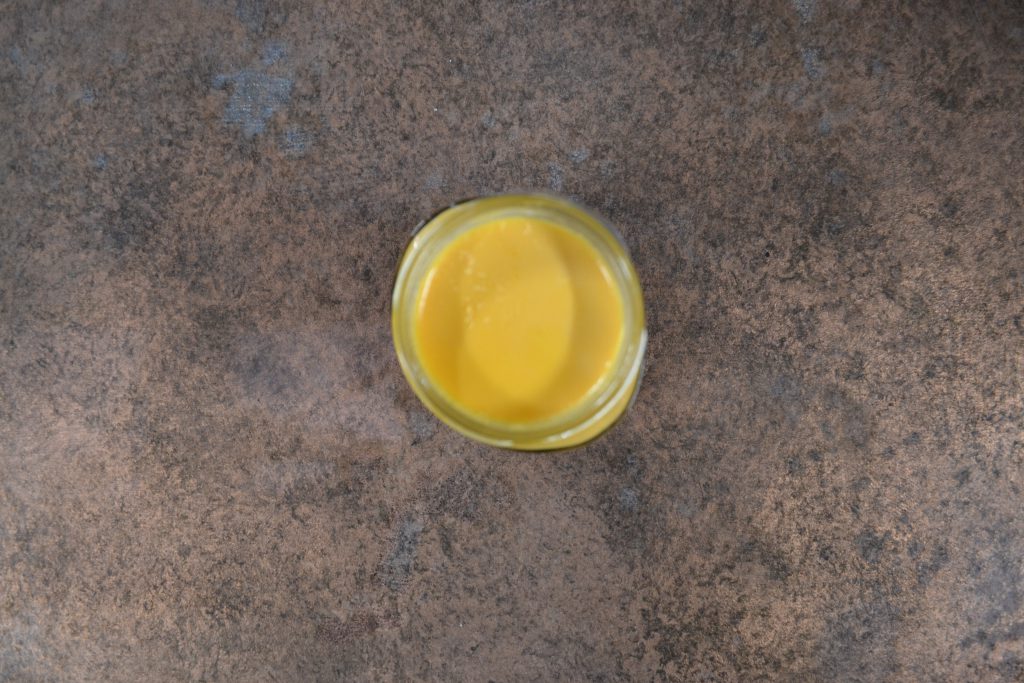
DDS: Our last cheese is definitely also a “cheese product.” Because it’s spelled CHEEZEE.
AO: Chee-zee.
DDS: “Cheezee Spread Cheddar”. Again, cheddar being used as an adjective.
AO: Are you ready for the ingredients?
DDS: Lay it on me, baby.
AO: I can barely read them, they’re so small. Water – first ingredient. Second ingredient, cheddar cheese. We’ve got refined coconut, palm, and/or soya oil. Buttermilk powder, rennet casin – I’m pretty sure they’re should be a comma between those two things. We have disodium phosphate – you know what disodium phosphate is?
DDS: Di, two. Sodium, sodium. Phosphate. Two Sodium Phosphate.
AO: We have iodized salt, which is interesting, because iodine prevents bacterial growth, which you usually want. Lactic acid. Natural and nature-identical flavors.
DDS: I’m sorry, that’s a new phrase with which I was not familiar. Nature-identical flavors?
AO: Nature-identical couldn’t be natural.
DDS: Nature-identical sounds more artificial than artificial.
AO: We’ll move on. Citric acid, potassium sorbate, paprika oleo resin, zinc sulfate, niacin, BHA/Propyl gallate, Vitamin A, Vitamin B1, Vitamin B2, and Vitamin D3. So it’s a vitamin rich food!
DDS: And it’s heads and tails the winner in terms of amount of ingredients.
AO: So I just opened it, and I’m smelling it. It smells equally like cheese, and like a butter caramel.
MC: It smells a little like the parmesan, and a little like the Singles, and a little like nacho cheese from a ball park.
DDS: It definitely has some nature-identical flavors. I think the only way to eat this is with your fingers.
MC: It’s very gooey.
AO: It kind of has the texture of mayonnaise.
MC: I was hoping it would be closer to a traditional cheese whiz.
DDS: You could definitely pump this through an aerosol can.
AO: It’s very soft, but I imagine if we hung it upside down for weeks, it wouldn’t drip.
MC: It says per 100g serving, you get 300 “energy.”
AO: This is the first one that distinctly tastes like chemicals.
DDS: It’s also the most pungent flavor.
AO: Intensely vaguely cheesy, without tasting like any real cheese.
DDS: I think you want to balance this intensity with an IPA.
AO: I agree.
DDS: The bitterness of the beer masks the cheese in a very important way. Anything less than the IPA will fall down to its pungency.
AO: The beer is definitely the hero in this pairing.
MC: So what was our favorite pairing here?
AO: What was yours?
MC: I have to say, I loved the string cheese with the Berliner.
DDS: String cheese and Berliner!
AO: I think that was mine too.
MC: I like a cheese you can play with, and this would make an excellent summer afternoon snack.
DDS: Couldn’t have said it better myself. Well thank you both for helping with this, and for lending your expertise!
If you enjoyed hearing Dan and Alex ramble about cheese and beer, they are going to be hosting our next Cheese and Beer Pairing on December 19th. Tickets are available here. And don’t worry, they picked much better cheeses for that one.



